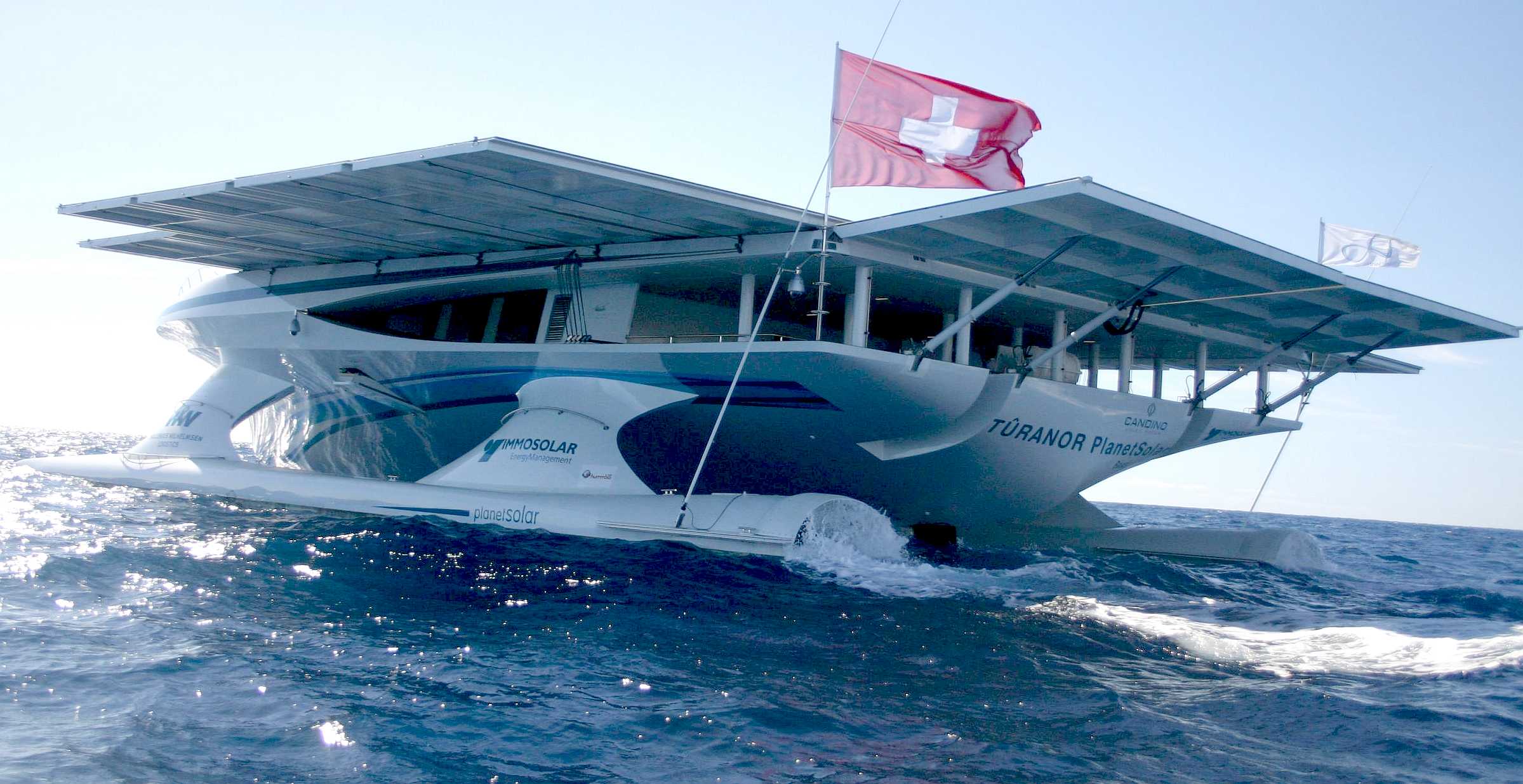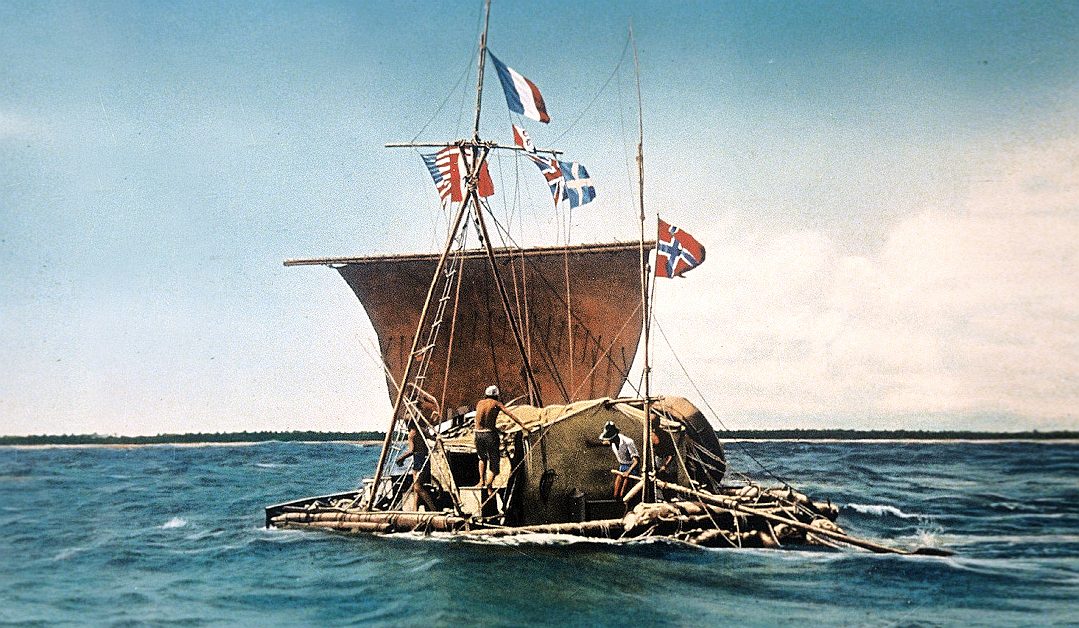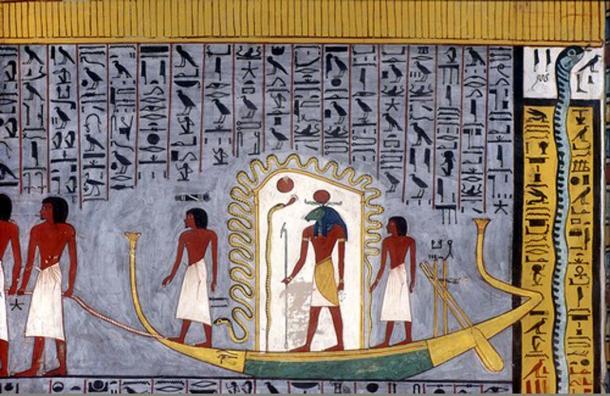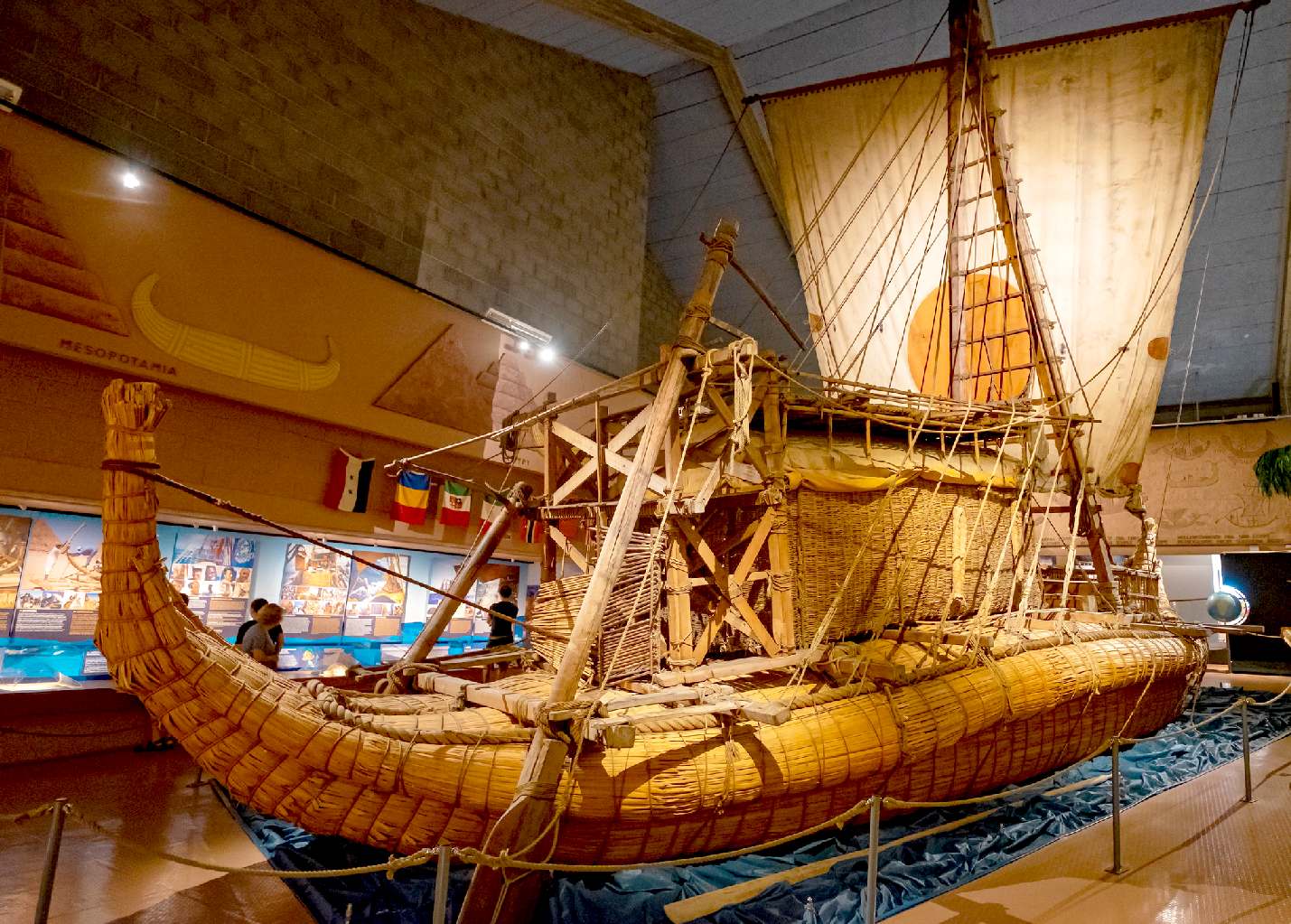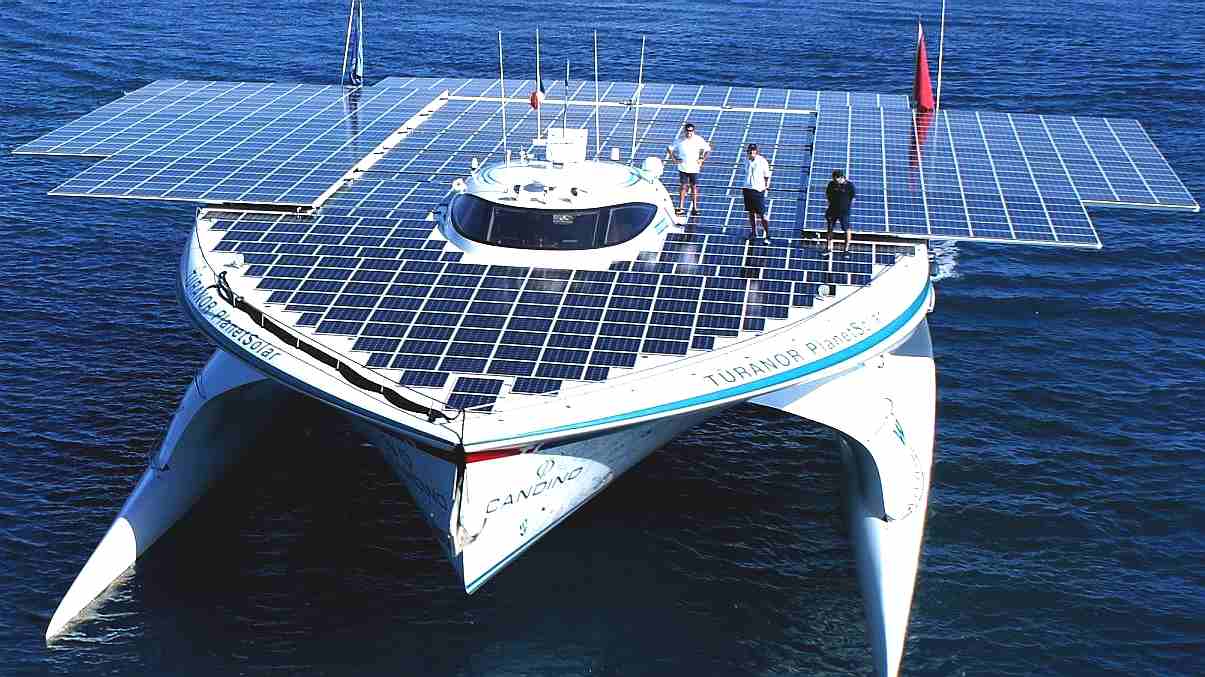|
RA'S SOLAR (FUNERAL) BOATS
Please use our A-Z INDEX to navigate this site or return HOME
|
SOLAR PIONEER - A real solar boat. The ancient Egyptians would have been at first amazed, then applauded using solar power to provide sustainable energy for international trade. As they worshiped the Sun, this vessel might well have been named Ra.
Egyptian solar ships are ancient wooden vessel which were found close to the Egyptian pyramids sites. Other areas where these ships were found buried are along ancient temples and other worship sites around 21 in number, including the infamous Imhotep, made famous by The Mummy film.
The best preserved of all solar ships is that of the Pharaoh, Khufu, alongside the Great Pyramid of Giza.
'Pharaoh' was the ancient Egyptian name for the office of kingship. The term began as a reference to the king's palace, but the meaning loosened over the course of Egyptian history until in the late period it was interchangeable with the Egyptian word for king. Such rulers were believed to be the incarnation of Horus.
Historians believe that the Egyptian solar ships where made as a symbolic representation of the sun god
(Ra) riding a ship.
The ancient mythology believed that Ra mounted the ship to complete his daily
voyage
around the earth.
Some of the stunning solar ships were unearthed around the Khufu area.
The best preserved solar ship was discovered in 1954 by Archeologist Kamal el-Mallakh. It had been sealed in a pit
hewn from the rocky soil surrounding the Khufu area.
THE CHEOPS MUSEUM - Is situated to the south of the Great pyramid. It was established by Kamal El - Mallakh who was born in Assuit, Egypt , on October 26, 1918.
The ship is kept at Khufu Boat Museum near the Great Pyramid. There was also a second Khufu solar ship which was discovered in the same year.
Interestingly, this ship had the name of King Khufu inscribed on it.
KONTIKI - In 1947 Heyerdahl and five fellow adventurers sailed from Peru to the Tuamotu Islands, French Polynesia in a pae-pae raft that they had constructed from balsa wood and other native materials, christened the Kon-Tiki. The Kon-Tiki expedition was inspired by old reports and drawings made by the Spanish Conquistadors of Inca rafts, and by native legends and archaeological evidence suggesting contact between South America and Polynesia.
CLEOPATRA -
A number of pharaohs saw the need for a strong navy, i.e. Snefru who according to the Palermo Stone built 100-cubit ships of meru wood and 60 sixteen-barges before hacking up the land of the Negro, bringing of 7,000 prisoners, and 200,000 large and small cattle, Thutmose III, the architect of the empire in Asia, Necho II struggling with the Babylonians and Ramses III, who had to contend with the Sea Peoples. Ramses wrote a 'report' to Amen
The history and function of the ship are not precisely known. It is of the type known as a “solar barge“, a ritual vessel to carry the resurrected king with the sun god Ra across the heavens. However, it bears some signs of having been used in
water, and it is possible that the ship was either a funerary “barge” used to carry the king’s embalmed body from Memphis to Giza, or even that Khufu himself used it as a “pilgrimage ship” to visit holy places and that it was then buried for him to use in the afterlife.
The museum where it is housed is called: 'The Khufu Boat Museum.' It has been described as a small modern facility resting alongside the Great Pyramid. The first floor of the museum takes the visitor through visuals, photographs and writings on the process of excavating and restoring the felucca. The ditch where the main felucca was found is incorporated into the museum ground floor design. To see the restored felucca, the visitor must climb a staircase leading to the second floor. Floor to ceiling windows allow for much sunlight and the wooden walkway takes the visitor around the felucca where the visitor can get a close view of its impressive size- 143 feet long and 19.5 feet wide.
In Ancient Egypt, barques referred to using the French word as Egyptian hieroglyphs were first translated by the Frenchman Jean-François Champollion, were a type of boat used from Egypt’s earliest recorded times and are depicted in many drawings, paintings, and reliefs that document the culture. Transportation to the afterlife was believed to be accomplished by way of barques as well, and the image is used in many of the religious murals and carvings in temples and tombs.
The most important Egyptian barque carried the dead pharaoh to become a deity. Great care was taken to provide a beautiful barque to the pharaoh for this journey, and models of the boats were placed in their tombs. Many models of these boats, that range from tiny to huge in size, have been found. Wealthy and royal members of the culture also provided barques for their final journey. The type of vessel depicted in Egyptian images remains quite similar throughout the thousands of years the culture persisted.
RA REED BOATS - In 1969 and 1970, Heyerdahl built two boats from papyrus and attempted to cross the Atlantic Ocean from Morocco in Africa. Based on drawings and models from ancient Egypt, the first boat, named Ra (after the Egyptian Sun god), was constructed by boat builders from Lake Chad using papyrus reed obtained from Lake Tana in Ethiopia and launched into the Atlantic Ocean from the coast of Morocco. The Ra crew included Thor Heyerdahl (Norway), Norman Baker (USA), Carlo Mauri (Italy), Yuri Senkevich (USSR), Santiago Genovés (Mexico), Georges Sourial (Egypt) and Abdullah Djibrine (Chad). Only Heyerdahl and Baker had sailing and navigation experience.
KHUFU - One of the best preserved solar boats, the Khufu ship is an intact full-size vessel from Ancient Egypt that was sealed into a pit in the Giza pyramid complex at the foot of the Great Pyramid of Giza around 2500 BC. The ship was almost certainly built for Khufu (King Cheops), the second pharaoh of the Fourth Dynasty of the Old Kingdom of Egypt.
The Ancient Egyptians might have foreseen the advent of solar power as prolonging life on earth long before the Elizabeth Swann and the IMO's quest to clean up the shipping world.
|
|
Please use our A-Z INDEX to navigate this site
This website is Copyright © 2024 Jameson Hunter Ltd
|
